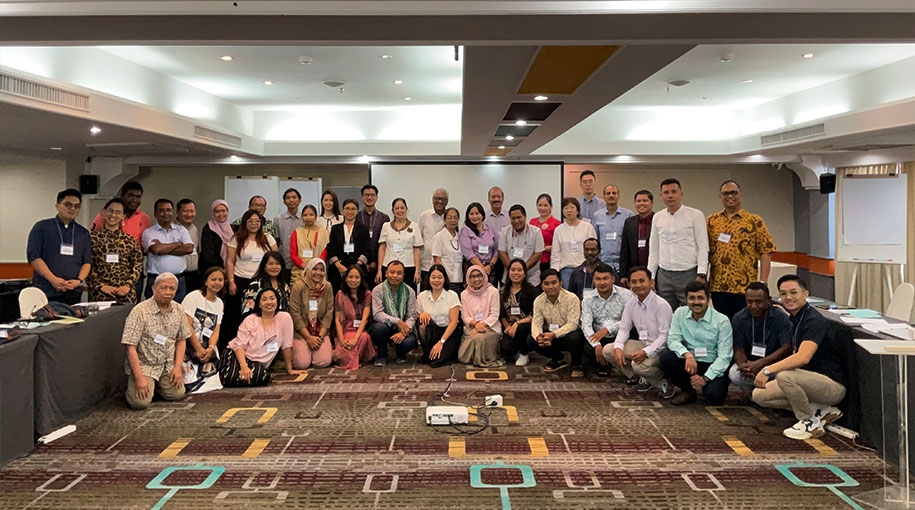“The objective of the Indigenous Peoples Assistance Facility (IPAF) is to strengthen indigenous peoples’ communities through strengthening their self-driven development within the framework of the United Nations Declaration on the Rights of Indigenous Peoples (UNDRIP), to also generate lessons learned and approaches for replication and upscaling.”
Helen Valdez of Tebtebba stressed the general objective of the IPAF, as she recounted highlights of its history as well as its corresponding call for proposals, project approval, and implementation proper during the IPAF 6 Asia-Pacific: Launching and Inception Workshop in Bangkok, Thailand on 6-10 November 2023. Participated in by about 37 partner representatives from the Asia-Pacific region, the five-day event was a formal opening of its sixth cycle in the area.
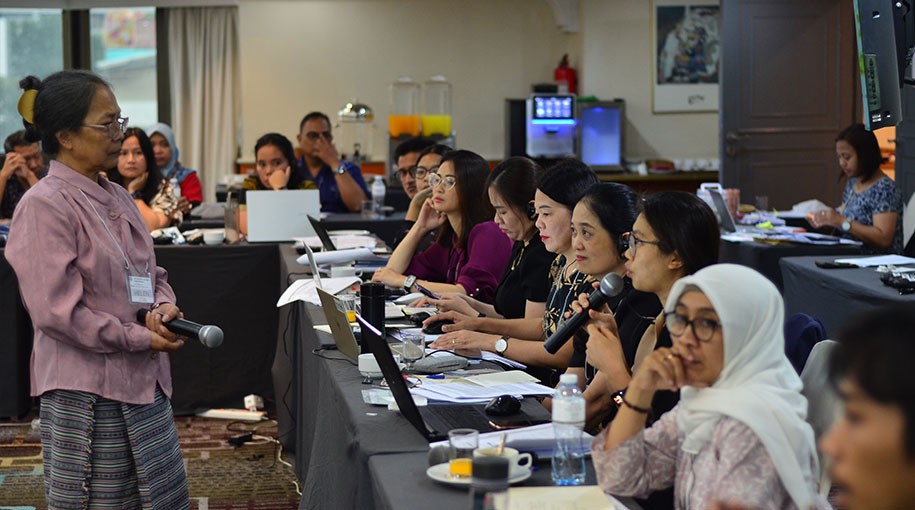
In line with the IPAF 6th Cycle theme, “Advancing Indigenous peoples’ conservation and sustainable management of biodiversity for adaptation and resilience to climate change”, a total of 17 projects in the Asia-Pacific region shall be supported for a span of 36 months inclusive of the four months needed for auditing and finalization of reports, among others.
Because IPAF 6 projects in Asia and the Pacific are monitored and assisted by Tebtebba, the assigned Regional Indigenous Peoples Organization (RIPO) for the Asia-Pacific region, the first day of the event revolved around introductory topics including a backgrounder on Tebtebba and the Indigenous Peoples Sustainable Self-Determined Development (IPSSDD), the main framework that guides all of the organization’s program work. A concise version of the IPSSDD training then commenced, providing participants with a review of the different concepts, instruments, laws, and principles relevant to indigenous peoples and indigenous peoples rights such as the UNDRIP, General Recommendation No. 39 under the Convention on the Elimination of All Forms of Discrimination Against Women (CEDAW), sustainable development, climate change, and biodiversity.
Together, partners walked through the partnership agreement which is a common reference for the implementation of the 17 projects across their diversity. This was followed by a review of the project logical framework as a significant tool in project design, management, monitoring and evaluation followed. Capping the second day was a presentation of the IPAF global indicators for adoption into the projects as they found relevant.
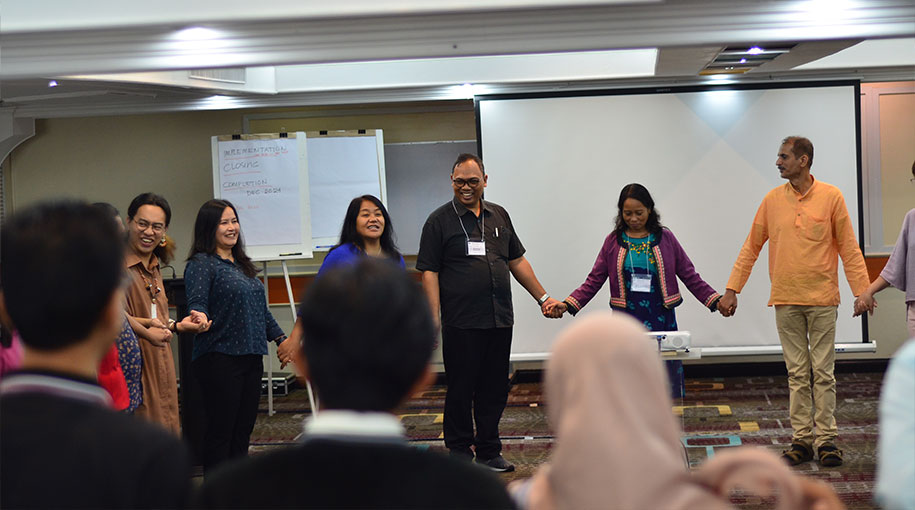
The morning of the third day dwelled on project-based workshops, allowing the partners to finetune their corresponding logframes so as to include several aspects like baselines, indicators, risks and risk mitigation measures. Plenary reporting followed in the afternoon where partners were asked to share about their projects, highlighting their logframes and the indicators identified and adopted. Partners from Cambodia (2), Mongolia (1), Philippines (1), Indonesia (3), India (4), and Papua New Guinea (1) presented in the plenary. “We formed an organization to try to advocate for our rights. [Being granted support to conduct our project is] really an honor and something we are really appreciative of… we are putting every dime so they can know that… constructive participation is going on here,” Steven Magil, project partner of the Mope Development Co-operation Association, Inc. the IPAF partner in Papua New Guinea said. “That’s how far we have tried to lobby for self-determined development,” he added.
The fourth day started with a continuation of the partners’ presentation of projects from Bangladesh (2) and Vietnam (2). After the sharing, Jane Yap-eo of Tebtebba provided some observations including the following: (1) the need to rephrase some of their indicators to render them more specific, (2) the relationship between objective and outcome, (3) the necessity of enlisting several component activities to reach a certain outcome, and (4) the assertion of indicator achievability within a given timeframe. “We still have to further finetune our logframes,” she said.
Eleanor Dictaan-Bang-oa, Coordinator of the Indigenous Women Program of Tebtebba, however, stressed the need to be mindful of the language used. “Language sensitivity must be observed,” she asserted. “We should be careful of the language we use when presenting our projects. We must not mimic stereotypes in describing indigenous peoples. Do not rub salt to the injury,” she emphasized, reiterating the systemic prejudice and historical abuses that indigenous peoples have been dealt with and the necessity of heightening the collective advocacy to stop these.
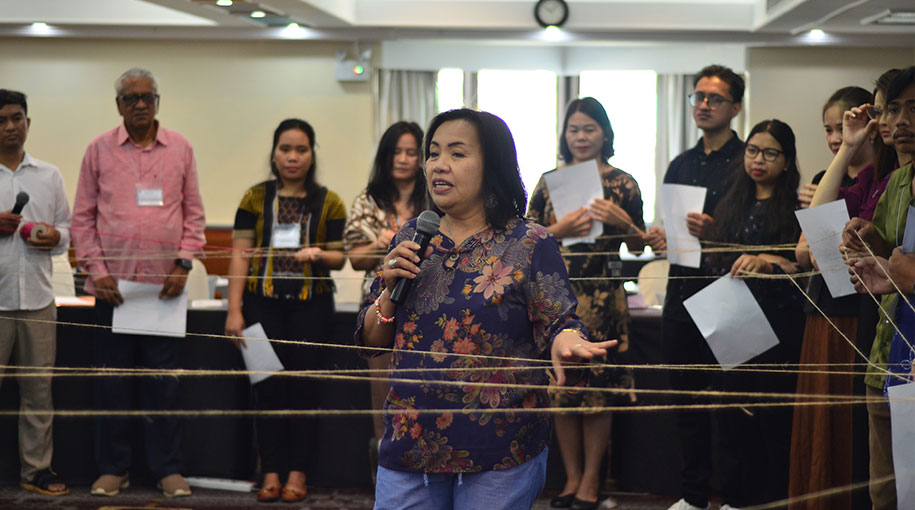
A session on project narrative reporting took place after the partners’ discussion of their logframes. Dictaan-Bang-oa shared some guidelines on how project narrative reports must be written, stressing that “part of project implementation is the writing of reports” to document results, challenges, lessons learned, and ways forward, among others. “Reports must contain basic details, disaggregated and referenced with supporting documents. Beyond the project logframes, the most important thing that we would like to see, at the end of the cycle, is how projects influenced the lives of your intended partner indigenous peoples’ organizations and/or communities. We have to be mindful of documenting these in various ways, i.e. audio-visual interviews, storytelling, news and/or feature writing, among others,” she emphasized.
The afternoon of the fourth day focused on the finance section of the partnership agreement. Catalino Corpuz Jr, Finance and Administration Manager of Tebtebba, provided the guidelines for the requesting and downloading of funds as he noted that effective financial management is necessary for smooth fund transfers. “We have to ensure that the funds that are sent or transferred to us for a certain year are properly mobilized,” Corpuz said as he stressed the importance of synchronizing project workplans with corresponding budget allocation and submitting documentation on time.
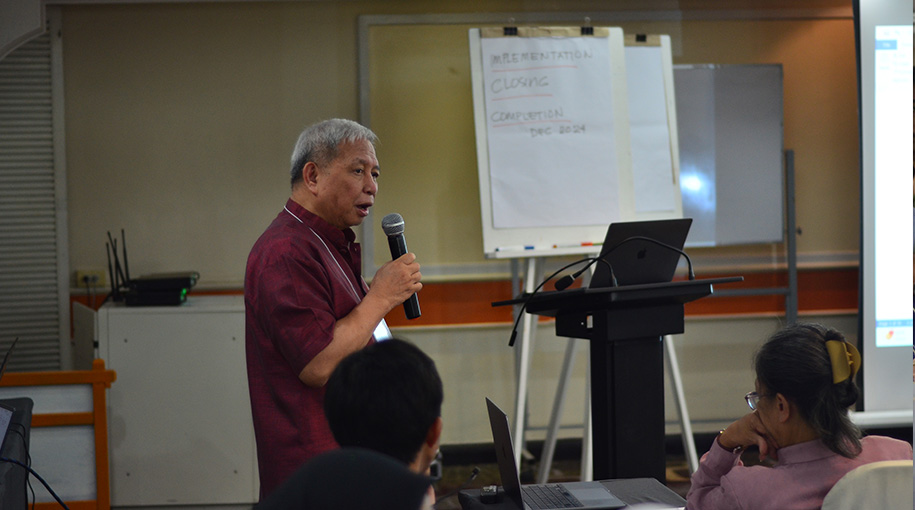
Lea Patugad of Tebtebba continued the discussion of finance matters, presenting the different forms and templates for finance reporting. She then provided exercises, allowing the participants to better understand how the finance process should be.
The last day of the event delved on knowledge management. This author provided the first part of the session, dwelling mainly on the basics of knowledge management, stating that it includes (1) identification, (2) organization, (3) storage, and (4) dissemination of data. She then discussed storytelling and social media as effective tools for dissemination as these were popular ways by which any campaign can be highlighted, made more relatable, and brought more closer to like-minded actors as well as stakeholders. “Effective change can occur when effective information dissemination is pursued, ensuring also that data shared is verifiable and credible,” she said.
Jimrex Calatan of Tebtebba facilitated the next part of the session, presenting how to create impactful videos as part of information dissemination. He presented several examples of video productions that convey specific messages in various ways. “A video is another tool or tactic by which information can be effectively shared,” he shared.
The last session dwelled on the ways forward of the event. “We are still starting our journey and we have to finalize project-related documents to move forward,” noted Dictaan-Bang-oa as she asked partners to work further on their logframes to ensure a smooth start to project implementation.


